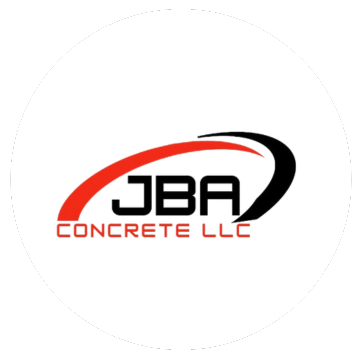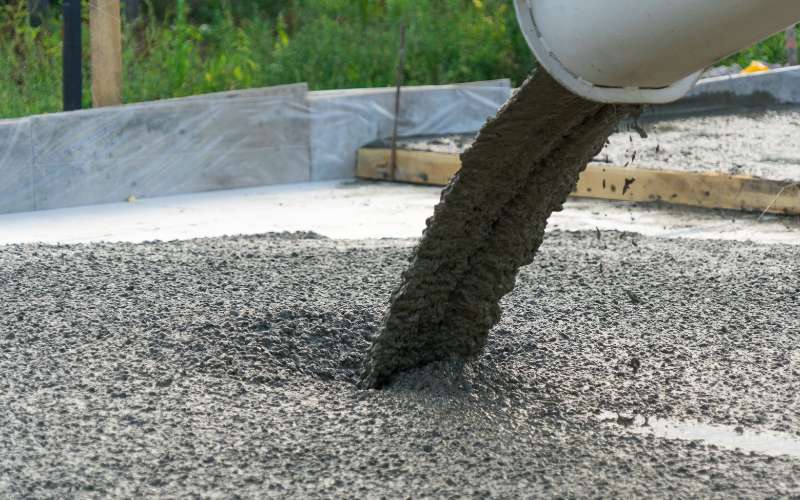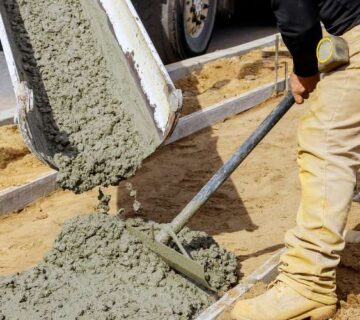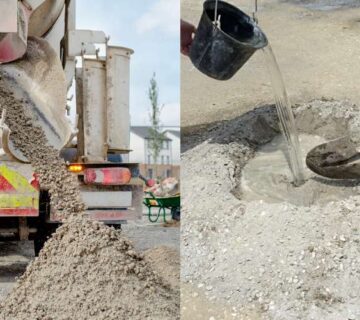Pouring concrete in humid weather can be challenging, but with the right techniques, you can achieve durable, long-lasting results. If you’ve ever faced issues like slow drying times or surface cracks, this blog post is for you. We’ll explore the best practices for pouring concrete in humid weather to help you avoid common mistakes and ensure your project’s success, even when moisture levels are high. Stay tuned for essential tips and expert advice.
Expert Tips for Successfully Pouring Concrete in Humid Conditions
Pouring concrete in humid conditions requires careful planning and execution to prevent complications. Whether you’re working on a large project or a small one, these best practices will ensure your concrete sets properly, avoiding cracks and weak spots. Below are essential steps for pouring concrete when moisture levels are high.
Prepare the Site Thoroughly
Before you start, it’s crucial to prepare the site properly. In humid weather, extra moisture can affect the ground, making it softer than usual. Always check the soil condition and ensure it’s compacted and stable. For best results, lay down a moisture barrier to prevent ground moisture from seeping into the concrete.
- Clear away any debris from the site.
- Level the ground to avoid uneven thickness in the concrete slab.
- Use a vapor barrier to minimize the moisture transfer.
Adjust the Concrete Mix
The concrete mix should be adjusted based on the humidity level. A standard mix may not dry evenly, leading to surface imperfections. Use less water in your mix during humid conditions to balance the moisture already in the air. Consider adding plasticizers to the mix to improve its flow without increasing the water content.
- Keep the water-cement ratio low to reduce drying issues.
- Add a plasticizer to make the mix more workable.
- Consider using a fast-setting mix to counteract humidity delays.
Plan the Timing Carefully
Timing is everything when it comes to pouring concrete in humid weather. High humidity can slow down the drying process, meaning the concrete stays wet longer than usual. It’s essential to monitor the weather forecast and avoid pouring on days when rain or thunderstorms are predicted.
- Pour early in the morning or late in the evening when temperatures are cooler.
- Avoid pouring during peak humidity hours, which can extend the drying time.
- Keep an eye on the weather forecast for unexpected changes.
Use a Curing Compound
Curing is an essential step to ensure the concrete develops its full strength. Humidity can cause surface moisture to evaporate unevenly, leading to cracking. Applying a curing compound helps control the moisture level during the hardening process.
- Spray a curing compound on the surface as soon as the concrete is set.
- Use wet coverings like burlap to keep the surface moist.
- Ensure even coverage to prevent uneven drying or surface cracking.
Monitor the Curing Process
Once the concrete is poured, your job isn’t done. Monitoring the curing process is essential to ensure the concrete dries evenly. In humid conditions, it’s best to check the moisture levels regularly and adjust the curing process as needed. Too much or too little moisture can lead to weak spots in the concrete.
- Check for surface dryness regularly.
- Keep the surface covered for at least seven days to ensure proper curing.
- Add water carefully if the surface starts to dry too quickly.
Avoid Overworking the Concrete
When dealing with humid weather, overworking the concrete can lead to problems such as surface cracks and segregation. Once you pour the concrete, it’s essential to work efficiently without spending too much time smoothing the surface.
- Strike the surface quickly and evenly.
- Avoid unnecessary troweling, as this can trap moisture and cause imperfections.
- Don’t add water to the surface to make it easier to work with.
Protect the Concrete After Pouring
Once your concrete is poured, it’s vital to protect it from the elements. Cover the surface to shield it from rain or excess moisture. Tarps or plastic sheeting can help prevent water from collecting on the surface, which can cause imperfections.
- Use plastic sheets to cover the freshly poured concrete.
- Avoid walking on the surface for at least 24 hours.
- Check for pooling water and remove it as needed.
Contact Us for Professional Concrete Services
Pouring concrete in humid weather doesn’t have to be a challenge if you follow these best practices. If you need expert assistance with your next concrete project, we’re here to help. Our team of professionals ensures quality results, no matter the weather. Contact us today to schedule a consultation or get a free quote. Let us handle the tough part while you enjoy the peace of mind that comes with a job well done!





No comment